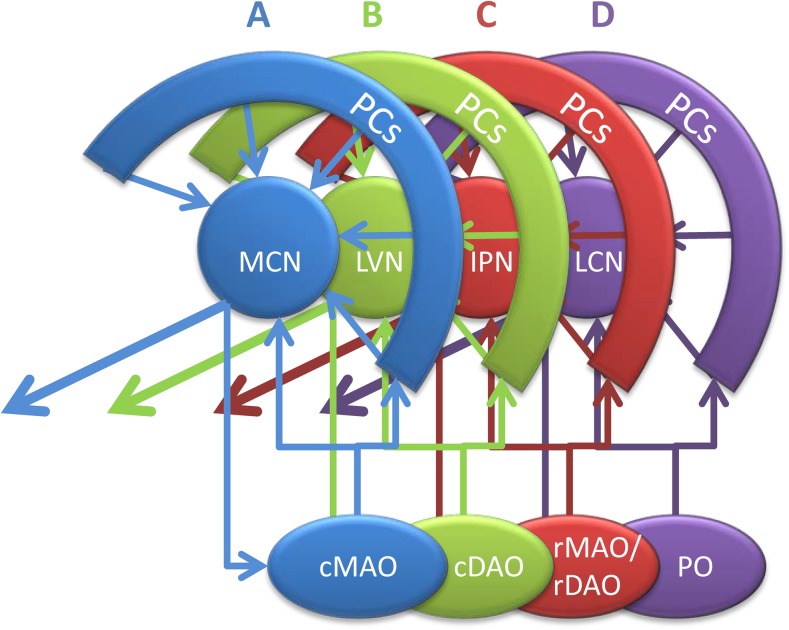Fig. 1.
Simplified diagram illustrating the four main modules of the right cerebellum seen from medial. The elementary modular connections are based on the projection of longitudinally arranged strips of Purkinje cells (PCs) to four main target nuclei and their olivocerebellar input from selective inferior olivary subnuclei. As such two vermal Purkinje cell zones (A and B) are recognized, together with their respective targets, the medial cerebellar nucleus (MCN) and lateral vestibular nucleus (LVN) and their sources of climbing fibers, caudal parts of the medial accessory (cMAO) and dorsal accessory (cDAO) olives, respectively. The C zones of the paravermis targets the interposed nuclei (IPN) and receives climbing fibers from the rostral (r) MAO and rDAO, while the D zones targets the lateral cerebellar nucleus (LCN) and receive from the principal olive (PO). Note that olivary subnuclei are also reciprocally connected according the same scheme. The interconnected olivocorticonuclear entity is referred to as module and each have a specific output. All modules (apart from the B module) have been further subdivided. Note that the modules of the vestibulocerebellum are not indicated in this diagram. Modified after Ruigrok [6]

